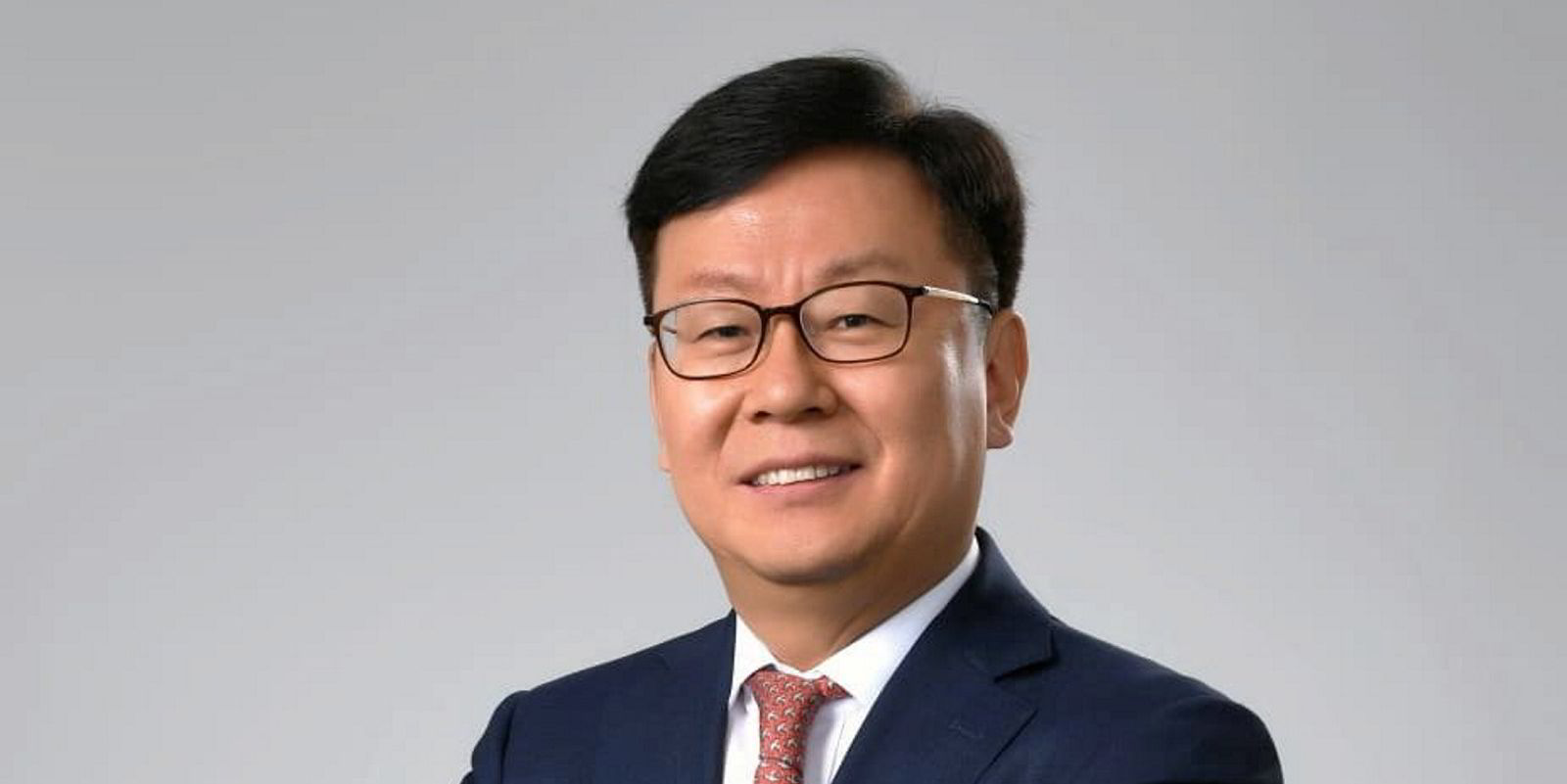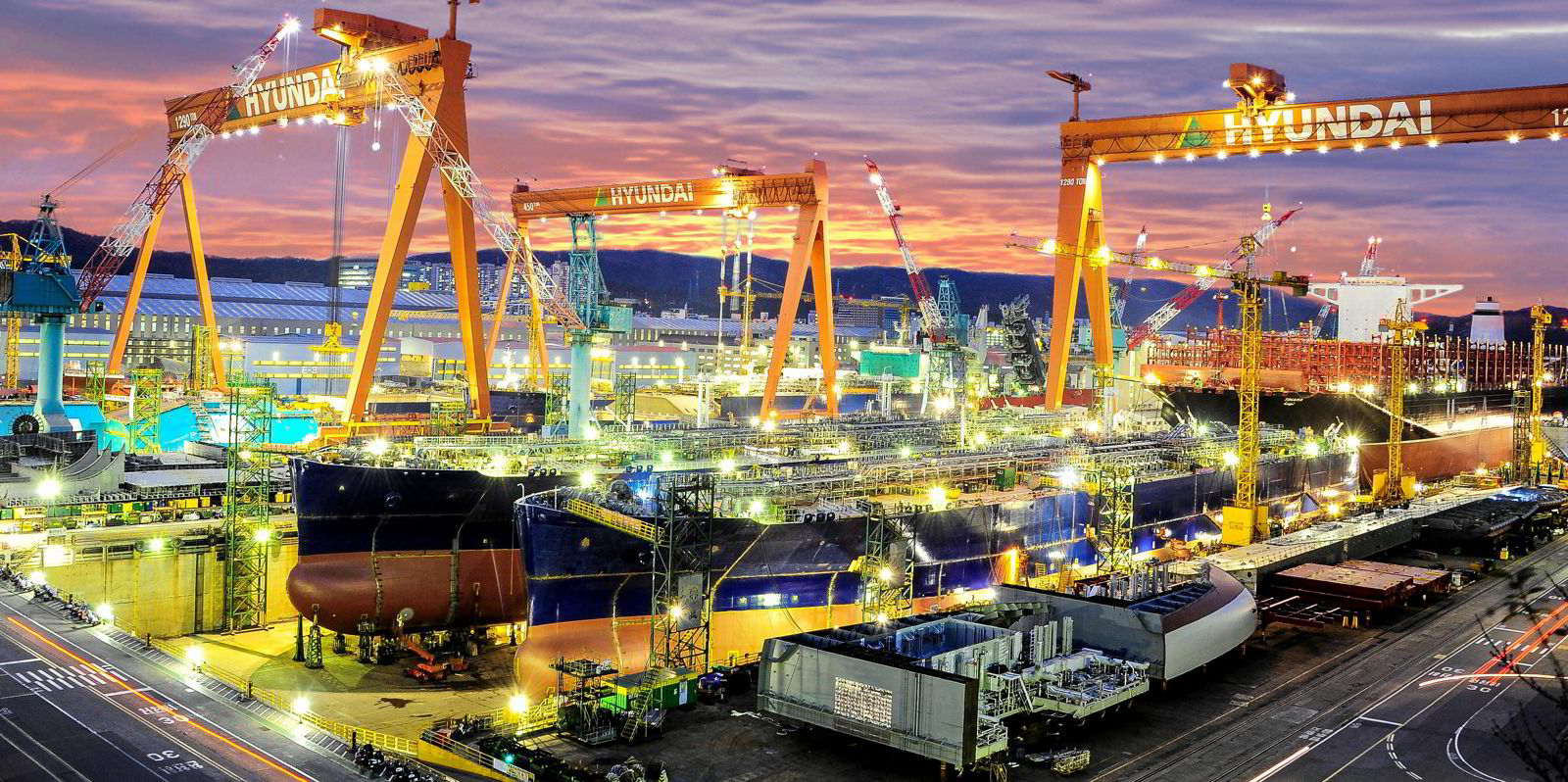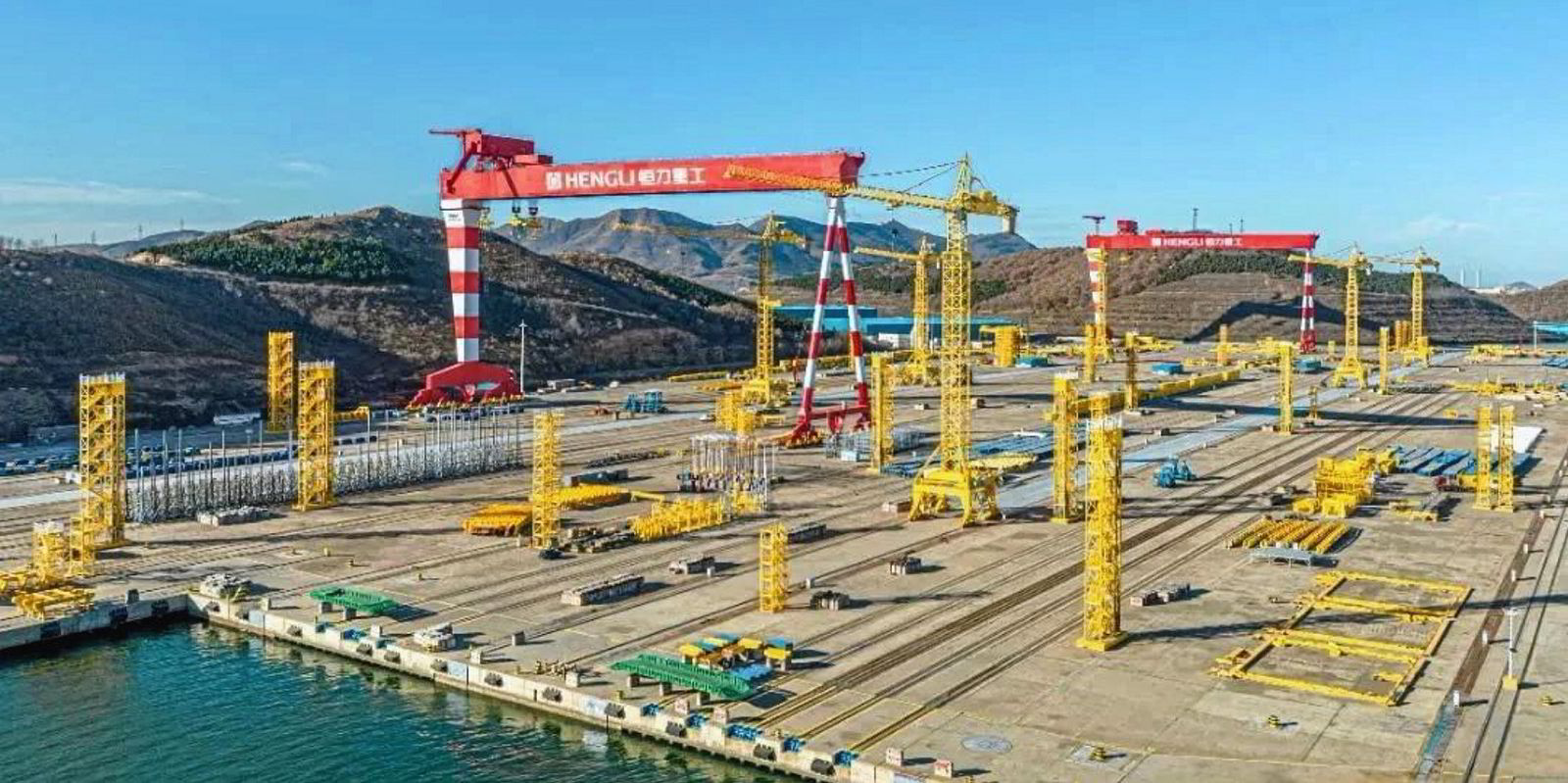HD Korea Shipbuilding & Offshore Engineering (HD KSOE) has already hit its annual order target of $15.74bn — three months before the end of the year.
It is the third consecutive year that South Korea’s largest shipbuilder managed to do so and the first yard in South Korea to reach its annual target this year.
One-third of its order haul in 2023 came from LNG carrier newbuildings.
The group has secured 22 out of the 42 LNG ships contracted.
The remaining vessels were shared by six other yards in South Korea and China, according to Clarksons’ Shipping Intelligence Network.
Speaking to TradeWinds, SY Park — chief operating officer and senior executive vice president of HD KSOE subsidiary HD Hyundai Heavy Industries — said his company is “in a comfortable situation” in terms of its orderbook and delivery position.
Park said the South Korean group is leading the global shipbuilding market in contracting LNG carriers and LPG ships.
As a result, it is in a position to seek a price increase for gas carrier orders so that it is able to cover its costs and any “future uncertainties”. Delivery of some vessels now stretches into 2027 and 2028.
As for conventional ships, such as tankers and container ships, the results are a little more disappointing. HHI did not meet the group’s expectations in these sectors and its order haul is lower than in 2022.
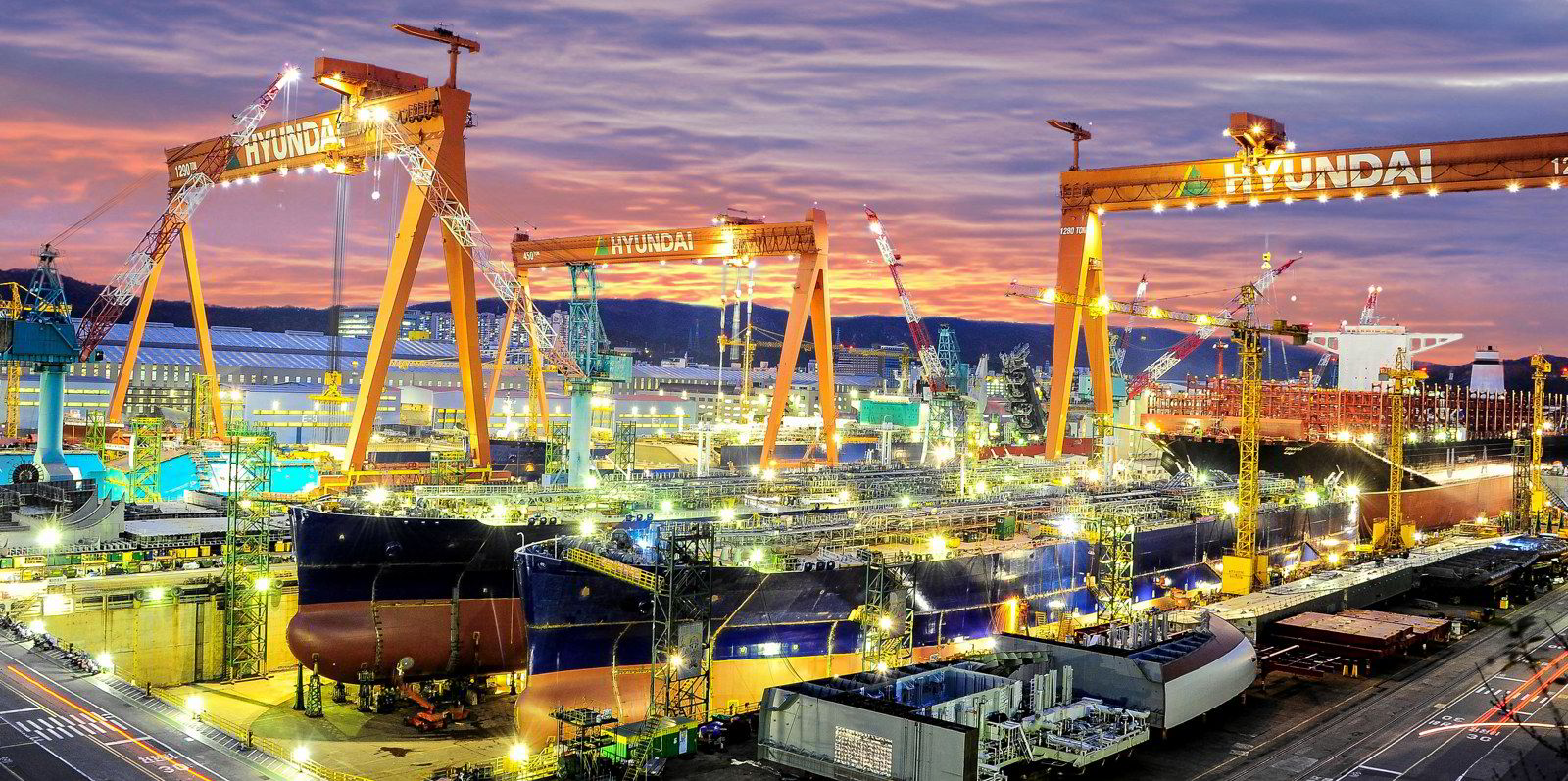
Park said the number of conventional ships that his company secured did not fill up the capacity that it had set aside.
“Last year, there was a boom in the container ship newbuilding market, and this allowed a good order for conventional ships,” Park said. “For this year, the demand for boxships has slowed down, although we did receive orders from companies like Yang Ming.”
Park said demand for tanker newbuildings has been slow since last year as owners could not find a good alternative fuel solution to power the new ships.
Russia’s invasion of Ukraine and Opec cuts, coupled with high newbuilding prices, have also deterred shipping companies from ordering new tankers.
“Nobody wanted to order new tankers last year,” Park said. “But we started promoting the ship type from early this year as the orderbook was small. But the orders went to shipyards in China.”
Competitive newbuilding prices and early delivery dates offered in China are believed to have attracted buyers there.
Park said South Korean shipyards such as his could not match Chinese prices.
“I do not know how the Chinese shipyards come up with the pricing … maybe they have the resources and engine makers to keep their cost down, but, for South Korean shipyards, we are unable to build ships that do not cover our costs.”
As an example, shipping companies were reported to be paying Chinese shipyards between $76m and $78m for suezmax newbuildings, compared with $90m in South Korea.
And Park said the price gap between South Korea and China had widened in the past 12 months.
“In the past, the price gap was about 9% to 10% but now it is like more than 13% to 15%,” he said. “The price gap is getting bigger ... in our case, we have been increasing our prices but Chinese shipyards have managed to remain the same.”
Double blow
Japan Marine United is joining Chinese shipyards in offering competitive tanker prices.
Geneva-based Advantage Tankers and Greek shipowners Kyklades Maritime and Alberta Ship Management have turned to the Yokohama-headquartered yard for conventional suezmax tankers, with Kyklades reported to be paying about $82m per ship.
“I am surprised at the Japanese pricing,” Park said. “I don’t know how they managed to offer this level.”
Some brokers believed the slide in the value of the yen against the US dollar, and cheap financing deals, have helped the Japanese shipyards.
Park is hoping owners will soon return to South Korea for tanker newbuildings once Chinese shipbuilders have sold their early delivery slots.
Park, when asked if Chinese shipyards would eventually take over conventional vessel types that have been largely dominated by South Korean shipbuilders, said: “China is a large shipbuilding nation, and the shipbuilding industry is developing steadily. I was told by a shipping company that if one has a strong site team at the [Chinese] shipyard, the quality of ships built there will be satisfactory.”
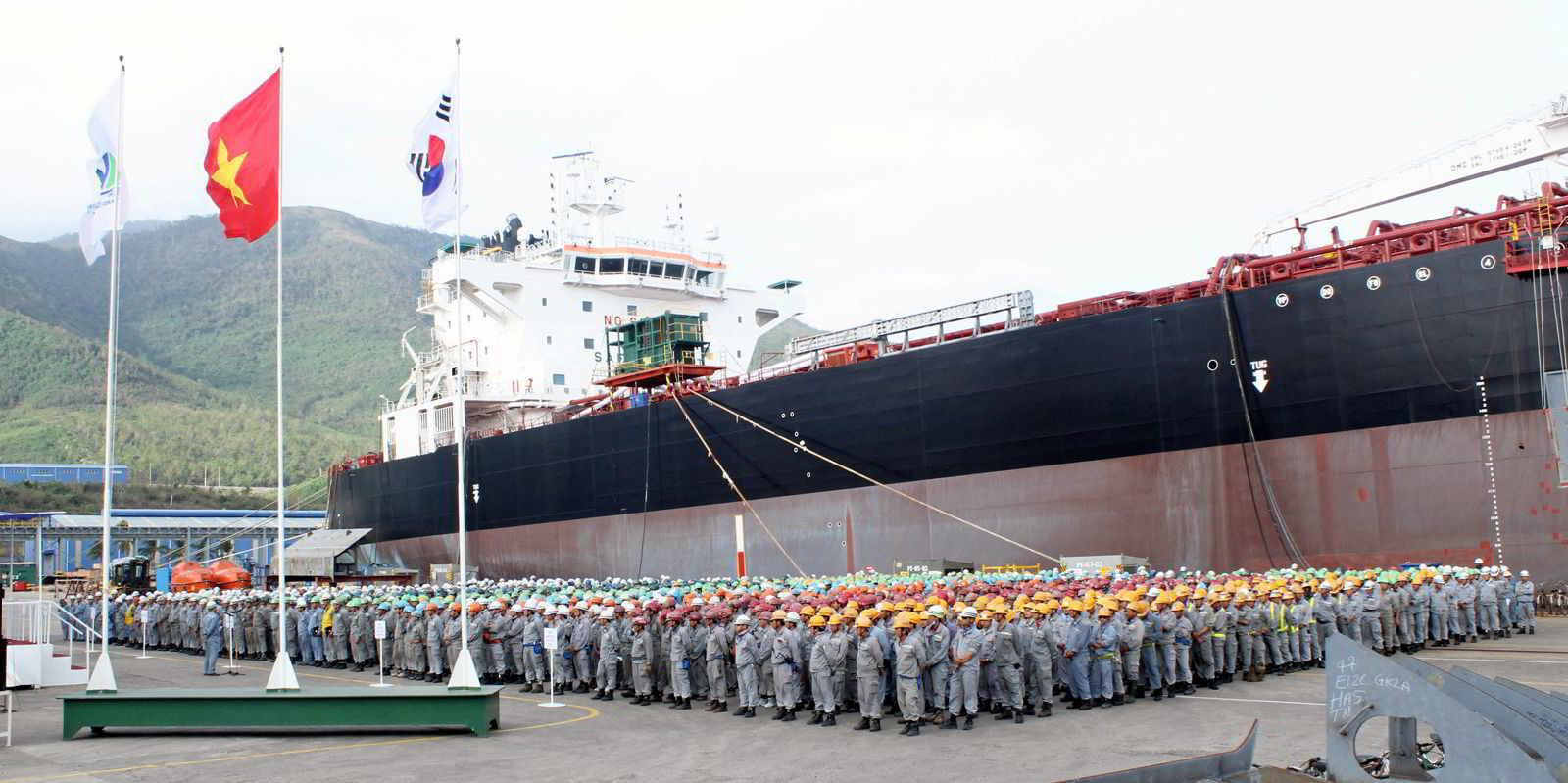
He said the pricing of newbuildings has been the main attraction for owners to order pure car/truck carriers and tankers at Chinese shipyards.
“There is a demand for PCTCs and tankers for fleet replacement,” Park said. “But with newbuilding prices and interest rates high, the solution for owners is Chinese shipyards.”
He said there is no imminent pressure for South Korean shipyards yet as the orderbooks are quite packed.
“South Korea may not be the number one country in shipbuilding, but the business will continue,” Park said. “Look at Japanese shipyards, they are still surviving.”
Beyond South Korea
Moving forward, Park thinks shipyards in South Korea may have to walk out of the country in search of new shipbuilding facilities that will help lower costs and have a bigger pool of labour resources to stay competitive.
HD KSOE already has a shipyard in Vietnam that focuses on building tankers up to aframax size. It is also one of the four partners in International Maritime Industries, a joint venture between itself, oil giant Saudi Aramco, Lamprell and VLCC owner Bahri.
Last year, HHI signed a technical service agreement to provide technical assistance and consulting services to International Maritime Industries on the construction of VLCCs.
“Our Vietnam shipyard is doing fine, but we are thinking of adding more complex ships there in the future,” Park said.
There is talk in the market that the HD Hyundai Group is showing interest in using Agila Subic Shipyard — formerly Hanjin Heavy Industries & Construction Philippines — which has two shipbuilding dry docks.
Besides Agila Subic, it is also conducting studies about new yards in Vietnam, China and India.
“It is not an imminent task ... but we have to think it over on how we can keep our market share and stay in the industry long term,” Park said.
He added that his company is checking on having such facilities abroad, but political stability in the host country is a critical condition in order to develop a shipyard there.
Park concluded that the shipbuilding industry in South Korea will not disappear totally as the country has good engineering knowledge, strong marketing capability and leading research and design technology that will keep the industry alive.
